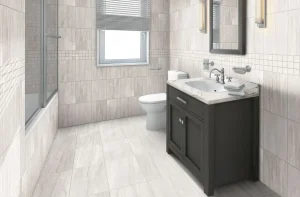The Pros and Cons of Metal Roofing

Many homeowners are drawn to metal roofs due to their durability and longevity as an alternative to shingle roofing systems. A properly maintained metal roof can last between 40-70 years with up to 50-year manufacturer’s warranties available to cover it.
Metal roofs provide homeowners with greater peace of mind by keeping out mold, mildew and moss growth, while reflecting sunlight to keep homes cooler in summertime.
Durability
Metal roofs typically last 50-70 years compared to 20-25 for asphalt shingle roofs. Metal is more resistant to mold, mildew and rot than its asphalt counterparts and doesn’t collect water or attract insects; additionally it’s more fireproof, saving home owners money on homeowner’s insurance premiums due to its higher fire rating.
Metal roofing materials used include copper, galvanized steel and aluminum. A rustproof coating can protect these metals from corrosion; however, all metal roofs are susceptible to lightning strikes and many people fear that metal roofs attract lightning more readily than others; however this is simply untrue as lightning seeks a path down toward earth and will strike whatever is highest in an area; hence the importance of having your home wired for lightning protection.
Steel roofs are known for being very durable, capable of withstanding heavy snow loads and strong winds, as well as being hail-proof (some models even qualify as class-4 roofs for up to two inches of hail).
Aesthetics
Metal roofs provide homeowners with many aesthetic choices that can complement various architectural designs, especially modern architecture. Standing seam metal panels feature raised seams and interlocking panels which create a clean modern aesthetic with less exposed fasteners compared to asphalt shingles – something especially beneficial when trying to incorporate one into contemporary architectural designs.
Corrugated and standing seam metal roofs come in an assortment of colors and finishes to complement any style of home. Additionally, metal shingles may resemble wood shakes, clay tiles, slate roof tiles or other traditional roofing styles for an authentic appearance.
Metal roofs offer both fire resistance and energy efficiency benefits that can help homeowners reduce cooling costs by reflecting sunlight away from structures while simultaneously absorbing solar heat. Their energy-efficiency can make metal roofs an appealing selling point in areas prone to wildfires or hot climates.
Energy Efficiency
Metal roofs can be extremely energy efficient when combined with proper insulation and ventilation measures. Their reflective surfaces reflect solar radiation rather than absorbing it, while any excess heat quickly dissipates during the night to keep homes cooler while cutting air conditioning costs.
Cool metal roofs can also help lower heating bills in colder climates by reflecting heat back into your house and not attracting lightning, thus decreasing how much energy is lost through its roof.
However, the exact energy savings experienced by homes can depend on their climate and roofing installation method. Studies show that metal roofing with batten-and-counter-batten systems underneath to allow better airflow can exhibit up to 45% less heat flow compared to shingled roofs. Furthermore, as it contains recycled materials it reduces landfill waste as well as cutting air pollution caused by coal-fired power plants, sulfur dioxide, and nitrous oxide emissions.
Maintenance
Metal roofing may seem low maintenance since it can last 50+ years without needing extensive upkeep, yet still requires upkeep to look its best and operate optimally.
Structural maintenance includes regular inspection of panels, seams and fasteners to detect any potential leakage issues and keep roofs watertight. Professional roofers should make sure panel connections have not become loose or moved out of position and that there is enough space available for thermal expansion/contraction to take place without incurring leakage issues.
Some homeowners choose to conduct surface maintenance themselves. But this should only be attempted using proper equipment like ladders and safety harnesses, preferably performed by experienced roofers. Walking on metal roofs should be avoided to avoid damaging its protective coatings and using corrosive cleaning chemicals should also be avoided for optimal performance.






